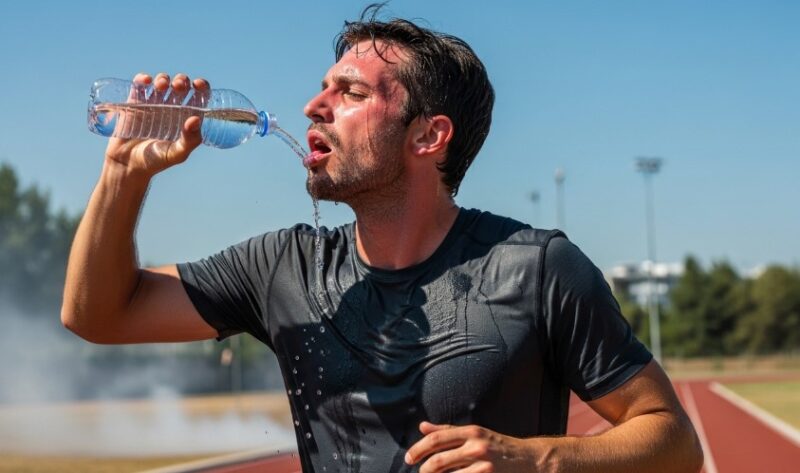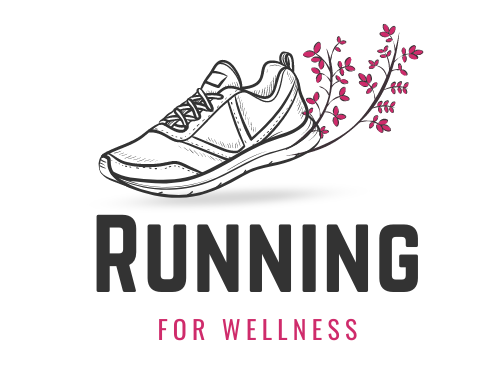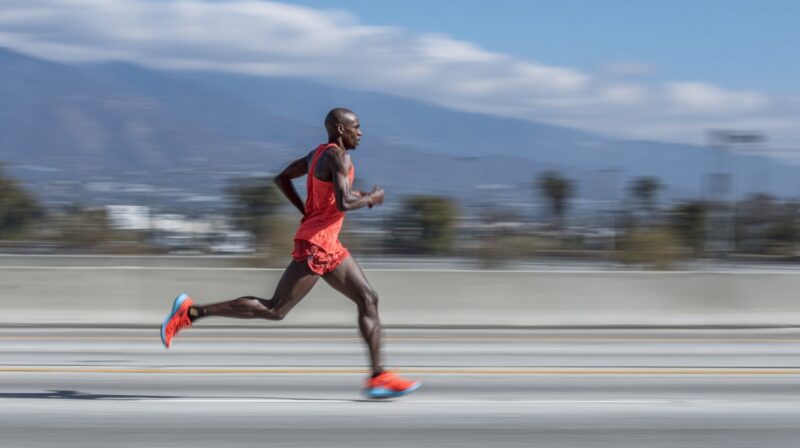Heat-related illnesses have become a growing concern in competitive sports, ranging from mild cramping to life-threatening emergencies.
Severe dehydration and heat stroke, while connected, are not the same condition, and differentiating between them can save lives.
More high school, collegiate, and professional athletes face these risks each year as training intensifies under hotter conditions.
What we want to do is to clarify when dehydration crosses the threshold into heat stroke, highlighting the crucial signs and responses needed to protect athletes.
Clinical Signs and Symptoms: How to Differentiate
Athletes suffering from severe dehydration and those with heat stroke may appear similar at first glance, yet subtle variations can determine outcomes.
Careful observation of vital signs provides the first set of distinctions.
Dehydration often keeps body temperature elevated but below life-threatening levels, while heat stroke drives core temperature into a dangerous range above 104°F.
Heart rate typically rises in both situations, but blood pressure tends to plummet more dramatically during dehydration because of reduced circulating volume.
Key differentiators include:
- Body temperature: moderate elevation in dehydration, extreme rise in heat stroke
- Heart rate: elevated in both, but linked to volume loss in dehydration
- Blood pressure: more significant drop in dehydration due to hypovolemia
Mental status separates the two most clearly. A dehydrated athlete typically remains alert, aware, and able to respond to directions.
By contrast, heat stroke manifests as disorientation, irrational behavior, or in severe cases, progression to delirium or coma. Such neurological changes are the hallmark red flags for medical staff.
Skin and sweat patterns also add complexity. Athletes with exertional heat stroke may still produce heavy sweat, contradicting the outdated teaching that dry skin confirms diagnosis.
Trainers and clinicians must recognize that an athlete drenched in sweat, struggling with gear, can still be in a heat stroke crisis.
Accurate field decisions demand awareness of these nuances.
Emergency Response and Treatment

Prompt recognition guides proper intervention. Athletes experiencing severe dehydration often respond well to rest and structured rehydration.
Oral fluids remain the first-line approach, with gradual replenishment to avoid gastrointestinal stress.
In cases where body weight loss exceeds 5%, intravenous hydration bags or IV fluids become necessary to restore circulating volume efficiently.
Monitoring of blood pressure, heart rate, and body weight ensures that recovery progresses safely.
Treatment steps for severe dehydration include:
- Oral rehydration with electrolyte solutions
- Rest in a shaded or cooled environment
- V fluids if >5% body weight loss
- Ongoing monitoring of vitals and weight
Heat stroke, in contrast, requires immediate and aggressive measures.
Ice-water immersion has proven most effective, with the goal of lowering core temperature below 104°F within 30 minutes.
Emergency medical services should be activated immediately, and rectal temperature monitoring every five minutes ensures precise tracking of progress.
On-field responders must adopt the “When in Doubt” principle, assuming heat stroke if any uncertainty exists, as delaying action can cost valuable time.
Treatment steps for heat stroke include:
- Rapid ice-water immersion
- Targeting <104°F within 30 minutes
- Rectal temperature monitoring every 5 minutes
- Immediate EMS activation
- Treating all uncertain cases as heat stroke
Fast, decisive treatment can turn a potentially fatal event into a survivable one, reinforcing the need for strict protocols in all athletic environments.
Risk Factors and Triggers

Certain intrinsic characteristics make some athletes more vulnerable than others.
Poor conditioning, a history of heat-related illness, or higher body fat percentage all increase susceptibility.
Excess motivation or pushing past personal limits can drive the body into unsafe zones.
Hormonal variations during the menstrual cycle also play a role, as does failure to undergo proper acclimatization before competing in hot climates.
Dehydration multiplies all these risks by stripping away the body’s primary defense mechanism of sweat-driven cooling.
Intrinsic risk factors include:
- Prior heat illness
- Poor physical conditioning
- Obesity or higher body mass
- Excessive competitiveness or drive
- Menstrual cycle influences
- Inadequate heat acclimatization
External or environmental triggers often determine when susceptibility becomes actual danger.
Clothing or equipment such as football pads trap heat and further slow cooling. Training regimens that schedule long workouts during peak sun exposure magnify these external threats.
Extrinsic triggers include:
- High temperature and humidity
- Inappropriate or heavy gear
- Long sessions scheduled at midday
- High-intensity workloads without rest breaks
The interplay of intrinsic vulnerabilities with extrinsic stressors sets the stage for severe dehydration to escalate quickly into heat stroke if not recognized early.
Pathophysiology: What’s Happening in the Body?

Severe dehydration triggers a chain reaction that begins with reduced blood volume, a state known as hypovolemia. With less circulating fluid, sweat production declines.
Sweat is the body’s primary cooling tool, so once the rate falls, the ability to regulate temperature falters.
Rising internal heat forces the cardiovascular system to work harder, but with reduced volume, blood cannot adequately reach muscles, organs, and skin.
This leads to slower circulation, reduced oxygen delivery, and difficulty maintaining cellular fluid balance.
If left unchecked, these shifts progress to cardiovascular strain, early organ dysfunction, and impaired athletic performance.
Mechanisms of severe dehydration include:
- Hypovolemia: reduced plasma volume lowers cardiac output
- Sweat reduction: limited cooling capacity leads to rising internal heat
- Circulatory decline: weaker perfusion to muscles and organs
- Cellular stress: imbalance in electrolytes and intracellular fluid
Heat stroke develops when thermoregulation breaks down entirely. The hypothalamus, normally responsible for controlling body temperature, can no longer keep up with the rising heat load.
As core temperature climbs past safe limits, enzymes essential for metabolism and energy production begin to fail.
Protein structures denature, halting biochemical pathways necessary for survival.
Once this tipping point is reached, damage accelerates rapidly and spreads across multiple systems.
Mechanisms of heat stroke include:
- Thermoregulatory collapse: hypothalamus loses control of core temperature
- Enzyme dysfunction: metabolic reactions halt due to protein denaturation
- Systemic overload: cardiovascular, hepatic, and muscular systems fail to meet demand
- Neurological disruption: altered consciousness signals severe central nervous system stress
Complications intensify the crisis.
Rhabdomyolysis, caused by muscle breakdown, releases myoglobin into the bloodstream, which can overwhelm the kidneys and trigger renal failure.
The liver also suffers under extreme metabolic strain, and clotting abnormalities may emerge as part of systemic organ dysfunction.
In the most critical cases, organ failure can unfold within minutes, leaving little time for recovery unless immediate intervention occurs.
Severe complications may include:
- Rhabdomyolysis: muscle tissue breakdown with toxic protein release
- Renal failure: kidneys are unable to filter excess myoglobin and toxins
- Liver stress: impaired metabolism under extreme heat load
- Malignant hyperthermia-like response: genetic susceptibility may worsen outcomes
Oral or intravenous hydration supports recovery in dehydration, but during heat stroke, the only effective intervention is rapid, aggressive cooling to bring down core temperature as quickly as possible.
Summary
Severe dehydration and heat stroke share overlapping features but differ in severity and urgency.
Recognizing distinctions in vital signs, mental status, and collapse patterns allows coaches, trainers, and medical personnel to act decisively.
Education, early detection, and immediate intervention form the foundation of prevention, ensuring athletes remain safe during training and competition.
Every second matters when the body’s cooling system fails, and informed decisions can prevent tragedy.
Related Posts:
- How Can You Start a Career as a Running Coach?
- Lower Back Pain While Running? Here's What You Need to Know
- Tendonitis, Shin Splints, and Other Common Leg…
- How Long Does It Take to Train for a Half Marathon?
- 10 Best Running Documentaries - Inspiring Films for Runners
- How To Recover From Muscle Inflammation Without Medication







